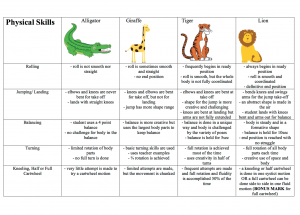Guiding Questions
What is health literacy?
Health literacy is the ability to access, understand, assess, communicate, and demonstrate information to promote, maintain, and improve a healthy lifestyle. In order to be literate in this subject, one needs to understand the basics and fundamental proponents of being healthy and staying healthy. Self-evaluation is one key strategy in the comprehension of health literacy. According to the BC Ministry of Education, students should be involved in monitoring and evaluating their own knowledge, attitudes, and skills in the four aspects of healthy living: healthy eating, active living, healthy relationships and healthy practices.
What is DPA and how is it different from PE?
Daily Physical Activity (DPA) was introduced by the Ministry of Education to encourage all schools and students in B.C. to include daily physical activities in their lessons. PE focuses more on the educational course relating to the physique of the human body, and the proper technique for fundamental movement skills and strategies. DPA, however, focuses more towards participating in activities at a moderate to intense levels that will benefit all aspects of our well-being. The duration of daily physical activities differs between grades. From Kindergarten to grade 9, thirty minutes of DPA is required. However, in grade 8 and up, students are required to do additional physical activity and log them as part of their graduation transition program.
Staying healthy is important to all learners. In each grade from Kindergarten to Grade 7, the students are expected to participate in physical activities for a minimum of 30 minutes each day, and participate in a range of endurance (e.g., speed walking, jogging, soccer), strength (e.g., push-ups, core strength training, skating) and flexibility (e.g., stretches, dancing) activities.

